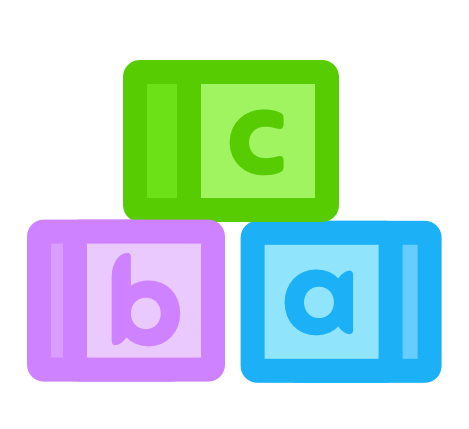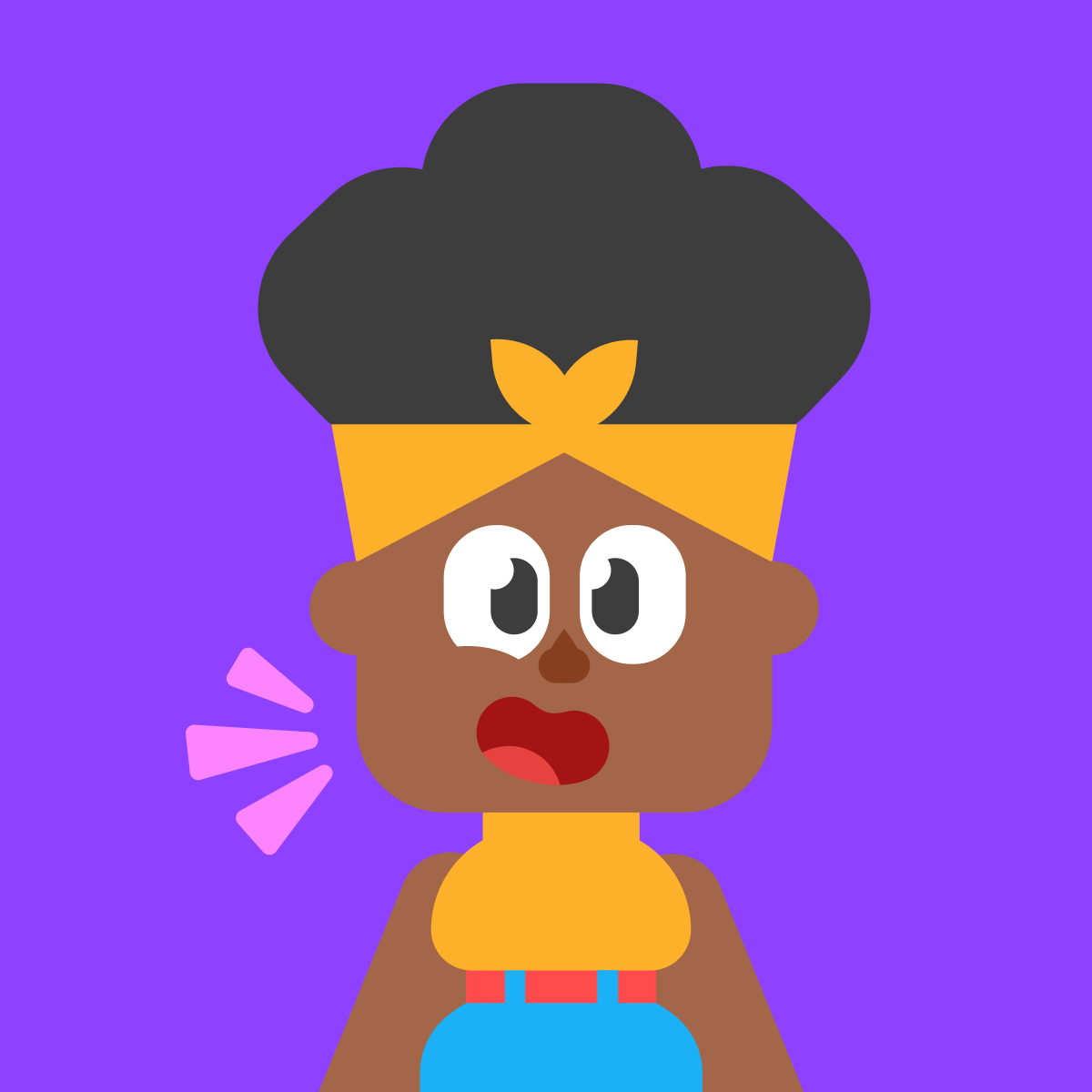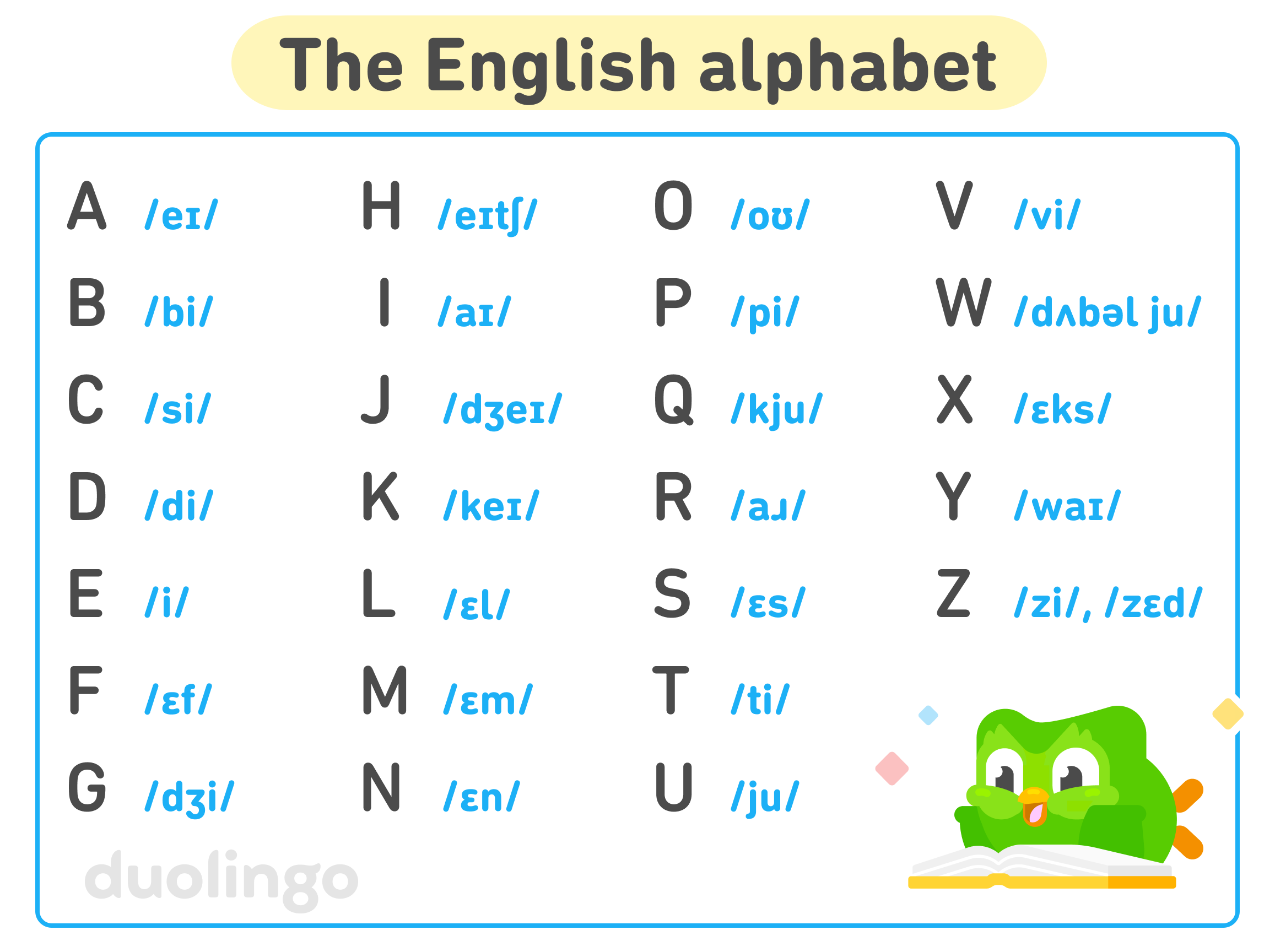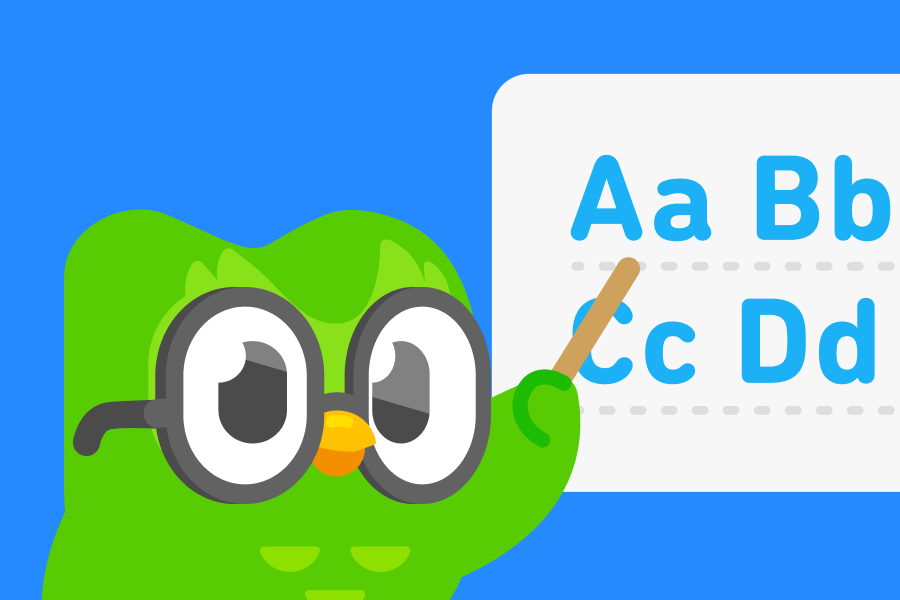If you’re studying English, you’ll need to know the English alphabet: what the letters are, how to pronounce them, and when to use them. The alphabet is sometimes called the ABCs, and you’ll hear them in many common situations.
This simple guide will get you spelling English words and understanding English speakers in no time!
What is the English alphabet?
The English alphabet consists of 26 letters. There are 5 vowels: “a,” “e,” “i,” “o,” and “u” (and sometimes “y” is included). The remaining 21 letters are consonants. Each letter has a distinct name, and although the names are mostly tied to the letters’ pronunciations, English letters can make multiple sounds—so don’t be surprised if the name of a letter doesn’t match how it’s pronounced in a particular word!

| Uppercase letter | Lowercase letter | Example word |
|---|---|---|
| A | a | apple |
| B | b | boy |
| C | c | cat |
| D | d | dog |
| E | e | elephant |
| F | f | family |
| G | g | girl |
| H | h | hat |
| I | i | ice cream |
| J | j | jacket |
| K | k | kitchen |
| L | l | lunch |
| M | m | monkey |
| N | n | nose |
| O | o | owl |
| P | p | pencil |
| Q | q | queen |
| R | r | rabbit |
| S | s | snake |
| T | t | tiger |
| U | u | umbrella |
| V | v | van |
| W | w | window |
| X | x | exit |
| Y | y | yellow |
| Z | z | zebra |
“X” is one of the most rarely-used letters in English, and you’ll almost never see it at the beginning of a word. “Q” is another rare letter, and it’s almost always followed by “u”!
Each letter has two versions: uppercase and lowercase. Uppercase letters are also called capital letters or big letters, and these are the versions you’ll use at the start of a sentence and for proper nouns (like the names of people, countries, languages, companies, months, and days of the week). Lowercase letters are sometimes called little letters, so you might hear people refer to a big A or little A for the different versions.
Sometimes, adding an “h” after a letter can make its sound completely different! This is often the case with “c,” “s,” and “t.” Check out how “h” changes the pronunciation (and meaning!) of these words:
- catvs.chat
- sortvs.short
- tankvs.thank
How to use the English alphabet
To help clarify what letter is meant, for example, while talking on the phone or in a noisy environment, English speakers often use an example word to distinguish between similar-sounding letters. There are many systems of example words.

For example, Oscar might spell his name on the phone by saying O as in owl, S as in snake, C as in cat, A as in apple, and R as in rabbit.
Fun facts about the English alphabet
While the alphabet itself is the same in all English-speaking countries, there are two letters you might hear pronounced differently in different regions: “h” and “z”! In the U.S., “h” is pronounced aitch (with no “h” sound at the beginning), while outside the U.S., you might hear haitch. Meanwhile, “z” is pronounced zee in U.S. English, while in many other countries, it’s pronounced zed. That’s because this letter gets its name from the Greek letter zeta!
The names of the English vowels might be especially hard to remember—they’re pronounced very differently than in related languages. The reason is because of dramatic sound changes that happened in English hundreds of years ago, a process called the Great Vowel Shift. You might need extra practice to get the vowel names right!
Another big change in the English alphabet was the addition of new letters. English originally used the letters “æ,” “þ,” and “ð”—and the symbol “&,” also known as an ampersand, used to be considered a letter of its own! If you look closely, you might be able to see how its shape comes from combining the letters “e” and “t”—that’s because it comes from the Latin word et, meaning “and.”
The letters “j,” “u,” and “w” are relatively new additions to the English alphabet, and “w” has gone through an evolution of its own: It was originally written as the letter “u” written twice in a row, which is why its name in English is double u!
As easy as ABC!
From reading your address on the phone to hearing new words spelled aloud, there are lots of ways you’ll use the English alphabet. Learning to pronounce your ABCs is just the beginning!
For more English tips and tricks, check out some of our other guides:
How to Study English on Your Own
The complete guide to English verbs
How to practice English pronunciation on Duolingo
Tips for using “since” and “for” in English
The hidden word order rules for English adjectives
How to form numbers in English, from 1 to a billion

